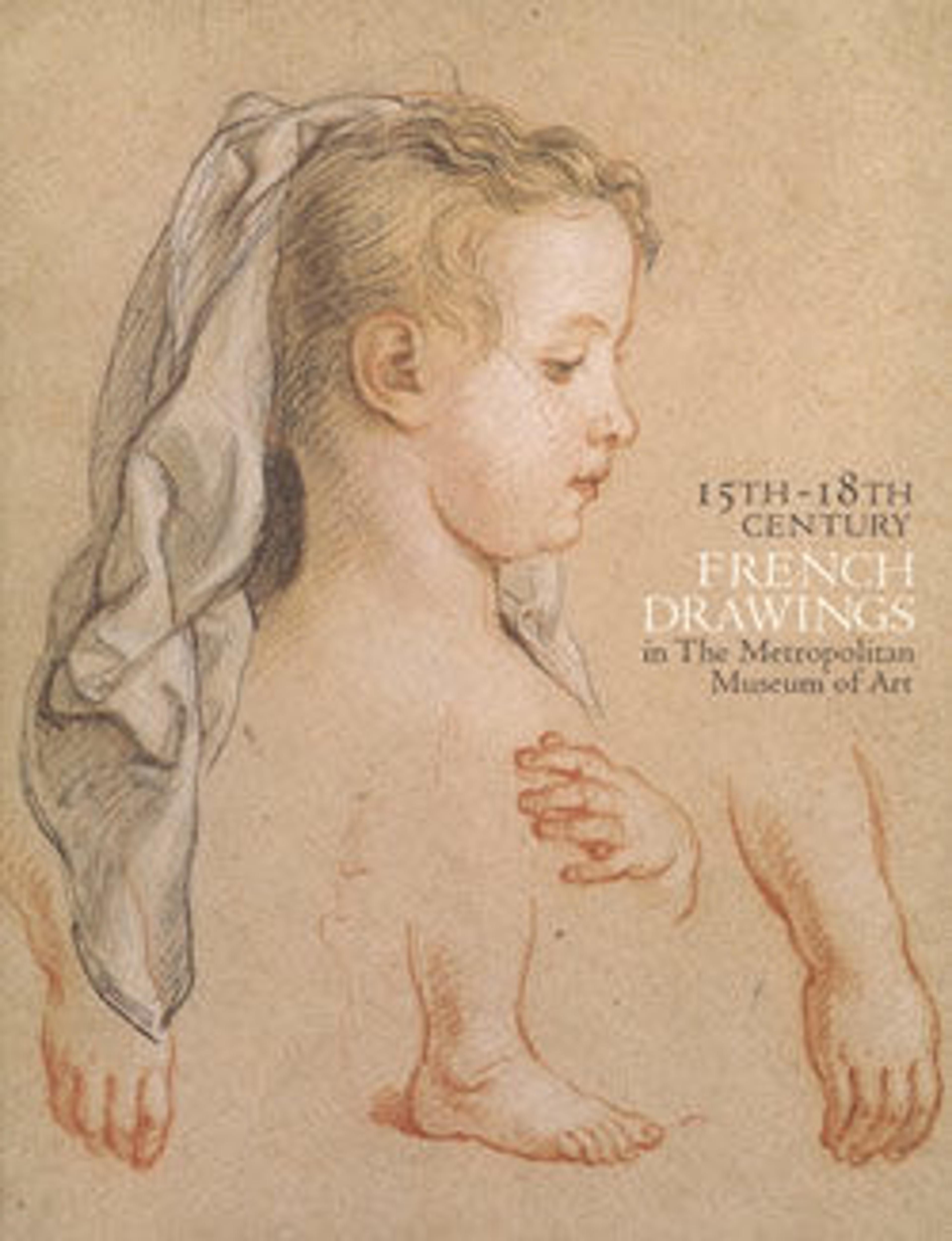Reclining River God
Louis de Boullogne the Younger was born into a family of painters and became a prominent member of the generation of artists who bridged the 17th and 18th centuries. Accepted at the Académie in 1681, he attained the position of director in 1722 and was appointed first painter to the king Louis XIV in 1725.
This academic nude is a typical example of his many vigorous life studies, exhibiting a confident graphic manner that blends classicism with charm and grace. From very early in his career, Boullogne the Younger favored the combination of black and white chalks on blue paper for both composition studies and figure studies, the latter of which were sometimes executed as academic exercises and sometimes in preparation for paintings.
With its beautiful mise en page (placement on the sheet), this energetic life study portrays the river god in a traditional reclining pose, but seen from behind, resting against a large jug with his arms raised in the air. Bearded and coiffed with a wreath of laurel branches, the model is swathed in drapery that only covers the top of his left leg. Focusing on the rendering of the musculature, Louis de Boullogne depicted the physical strength of the river god by combining supple but strong strokes that outline the contours, with parallel and cross-hatching in black and white chalk to achieve a broad range of tones. This allegorical figure can be considered as a personification of virility but also of abundance, since he is responsible for the sources from which spring the rivers.
François Marandet has recently pointed out that this drawing is a study for a figure in a painting of Apollo and Daphne in a French private collection.
This academic nude is a typical example of his many vigorous life studies, exhibiting a confident graphic manner that blends classicism with charm and grace. From very early in his career, Boullogne the Younger favored the combination of black and white chalks on blue paper for both composition studies and figure studies, the latter of which were sometimes executed as academic exercises and sometimes in preparation for paintings.
With its beautiful mise en page (placement on the sheet), this energetic life study portrays the river god in a traditional reclining pose, but seen from behind, resting against a large jug with his arms raised in the air. Bearded and coiffed with a wreath of laurel branches, the model is swathed in drapery that only covers the top of his left leg. Focusing on the rendering of the musculature, Louis de Boullogne depicted the physical strength of the river god by combining supple but strong strokes that outline the contours, with parallel and cross-hatching in black and white chalk to achieve a broad range of tones. This allegorical figure can be considered as a personification of virility but also of abundance, since he is responsible for the sources from which spring the rivers.
François Marandet has recently pointed out that this drawing is a study for a figure in a painting of Apollo and Daphne in a French private collection.
Artwork Details
- Title:Reclining River God
- Artist:Louis de Boullogne the Younger (French, Paris 1654–1733 Paris)
- Date:1694–1715
- Medium:Black chalk, heightened with white chalk on blue paper
- Dimensions:12 15/16 x 20 9/16 in. (32.9 x 52.2 cm)
- Classification:Drawings
- Credit Line:Rogers Fund, 1961
- Object Number:61.28
- Curatorial Department: Drawings and Prints
More Artwork
Research Resources
The Met provides unparalleled resources for research and welcomes an international community of students and scholars. The Met's Open Access API is where creators and researchers can connect to the The Met collection. Open Access data and public domain images are available for unrestricted commercial and noncommercial use without permission or fee.
To request images under copyright and other restrictions, please use this Image Request form.
Feedback
We continue to research and examine historical and cultural context for objects in The Met collection. If you have comments or questions about this object record, please contact us using the form below. The Museum looks forward to receiving your comments.
